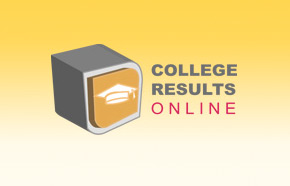To subsidized or unsubsidized that is the question
Down to the wire with choosing your options. Do I choose a subsidized student loan or an unsubsidized loan, or both?
The difference between Subsidized and Unsubsidized is that the interest accrued on borrowed money must be paid back by someone, either the borrower or the federal government.
• A bank, lending institution or credit union lends a borrower money with the intent to make money. For simplicity sake, if someone was to borrow $1,000, the bank would require the borrower to pay back the $1,000 plus “interest”. The interest is the profit the lender makes. For example, the borrower pays the lender $100 in eleven payments for a total of $1,100. The original $1,000 is paid back plus an additional $100. The original $1,000 is called “principle”. The $100 is called interest.
There are two types of student loans Subsidized and Unsubsidized. They are also called sub and unsub loans. (There are other student loans but we will only discuss these.)
The rules for a Sub loan is, the federal government will pay the interest during a deferment period. The deferment period is while you are in school (up to 4 ½ years) and the student must be attending an accredited college at least part time.
So if a student borrows $5,000 in a Sub loan at the end of the deferment period the balance of the loan would be $5,000. After the deferment period the borrower would pay any interest that accumulates AFTER that point. If the loan is paid off before the deferment period ends nothing else would be owed.
Unsub loans don’t have a deferment period. The borrower is responsible to pay both the principle and interest.
Let’s say that a student borrows $5,000 in an Unsubsidized Stafford loan, (unsubsidized means that the interest on the borrowed money accumulates.) At the end of the deferment period the balance of the loan (principle plus accumulated interest) is $6,772.47. $1,772.47 is added to the principle loan balance of $5,000.
This means that at the end of the deferment period the total due on the borrowed money is $6,772.47. Interest will continue to accumulate until the entire loan is paid off. And if the minimum payment is made each month at the end, the borrower would have paid a total of $9,352.80. The lender would receive the original $5,000 plus $4,352.80 in interest profit. (These numbers are estimates and used for illustration purposes only.)
It is less expensive to pay the loan off early and/or pay more than the monthly minimum payment.
It is best to pay off the Unsub loans first as these loans are more expensive over time. And if you are able, make payments during the deferment period.
Excerpt from the Guide to Federal Student Aid
Subsidized Direct* or FFEL** Stafford Loan
Loan: must be repaid Subsidized: The U.S. Department of Education pays interest while the borrower is in school and during grace and deferment periods; student must be attending at least half-time and have financial need; fixed interest rate of 5.6% for loans made to undergraduates with the first disbursement date between July 1, 2009 and June 30, 2010; fixed rate of 6.8% is set for loans made to graduate students $3,500–$8,500, depending on grade level.
Unsubsidized Direct* or FFEL** Stafford Loan
Loan: must be repaid Unsubsidized: The borrower is responsible for all interest; must be at least half-time; financial need not required; fixed interest rate of 6.8% for new borrowers $5,500–$20,500 (less any subsidized amounts received for same period), depending on grade level and dependency status.
Direct* or FFEL** PLUS Loan
Loan: must be repaid For parents of dependent undergraduate students and for graduate and professional students; students must be enrolled at least half-time; financial need not required Borrower must not have adverse credit history PLUS Loans are unsubsidized, the borrower is responsible for all interest; fixed interest rate is 8.5% for FFEL PLUS Loans and 7.9% for Direct PLUS Loans Maximum amount is cost of attendance minus any other financial aid student receives; no minimum amount.






Wow great information!